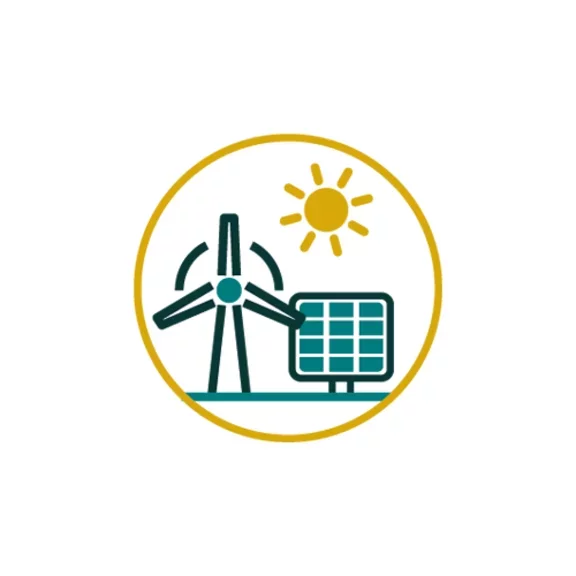About H2
Get to know the most abundant element in the universe
3 benefits of hydrogen for trucks
-
Quick refueling
-
Preserved payload
-
Extensive range
What is hydrogen?
Hydrogen (or H2) is an invisible, odorless and non-toxic gas that is lighter than air and easily forms compounds, which means it easily reacts with other molecules. The most commonly known compound is with oxygen: H2O, which is water. H2 is a powerful energy carrier that can be used in fuel cells to generate electricity to power vehicles, or heating systems. While driving, no harmful substances such as pollutants and greenhouse gases are emitted from the vehicle exhaust (for FCEV).
Hydrogen production
There are a variety of ways to produce hydrogen on an industrial scale.
The most common process is steam reforming from natural gas. Natural gas (CH), which comprises carbon (C) and hydrogen (H) atoms, is heated in the presence of steam. That chemical reaction produces both molecular hydrogen (H2) and carbon dioxide (CO2). A way to decarbonize this process is to capture the CO2 emitted in the process, before purifying it for other industrial processes. Another option is to ensure its sequestration.
An alternative process is water electrolysis. Water (H2O), which consists of both oxygen (O) and hydrogen (H) atoms, is subjected to an electric current. That chemical reaction produces both molecular dioxygen (O2) and molecular dihydrogen (H2).
The "colors" of hydrogen
To support the transport sector, and other hard-to-abate industries, ensuring a low-carbon hydrogen supply is essential. According to the World Energy Council, in its 2019 insights brief, the source of energy used and the production method define whether hydrogen is informally considered grey, blue or green; with the following definitions:
- Grey hydrogen: Currently, 96% of hydrogen is produced from fossil fuels via carbon intensive processes
- Blue hydrogen: Grey hydrogen whose CO2 emitted during production is sequestered via carbon capture and storage (CCS)
- Green hydrogen: Renewable hydrogen produced using renewable energy sources
Advantages of hydrogen for trucks
Hydrogen is particularly well-suited to long-distance road transport, as it enables rapid refueling - in about 15 minutes - and a long range - up to 800 km - while preserving vehicle payload capacity.
Refueling with hydrogen
Refueling with hydrogen is a quite simple process, much like refueling with conventional fuels. The first thing to do is to take the hose from the pump and insert it in the vehicle nozzle. The connection is then sealtight: hydrogen cannot evaporate or escape in the air. The fueling begins once the pump is properly inserted in the nozzle.
Hydrogen is injected in the vehicle tank at very high pressure (350 or 700 bar) and a very low temperature (minus 40°C). Result, it takes around 15 minutes to refuel buses and trucks, 5 minutes for cars.
All hydrogen fueling meets specific European Union standards. A full tank is measured in kilograms of hydrogen. A passenger vehicle can travel about 100 km on 1 kilogram of hydrogen. Depending on their use, trucks consume 8 to 10 kilograms of hydrogen per 100 kilometer.

“Water will one day be employed as fuel, that hydrogen and oxygen which constitute it, used singly or together, will furnish an inexhaustible source of heat and light, of an intensity of which coal is not capable.
”
Jules Verne
In his book "The Mysterious Island"
How does a Fuel Cell Electric Vehicle work?
Fuel Cell Electric Vehicles (or FCEV) are members of the electric vehicle family. With an FCEV, the vehicle stores energy in its tank in the form of pressurized hydrogen. The fuel cell converts that hydrogen into electricity.
The propulsion system comprises of:
A pressurized hydrogen tank: the hydrogen is stored as a gas in one or more tanks, either at 350 bar (buses, waste collection vehicles) or 700 bar (passenger cars and trucks).
A fuel cell: the vehicle's nerve center, using hydrogen to product electricity.
A battery buffer: the electricity produced by the fuel cell is stored in the battery buffer until it is used by the electric motor. The battery buffer can also be used to capture kinetic energy during braking.
An electric motor: it converts the electricity into mechanical energy to make the vehicle go.
As a result, the vehicle doesn't generate any emissions on the road, except for water vapor. In addition, a fuel cell produces electricity without making any noise. So you enjoy a much quieter ride than with a conventional internal combustion vehicle.


